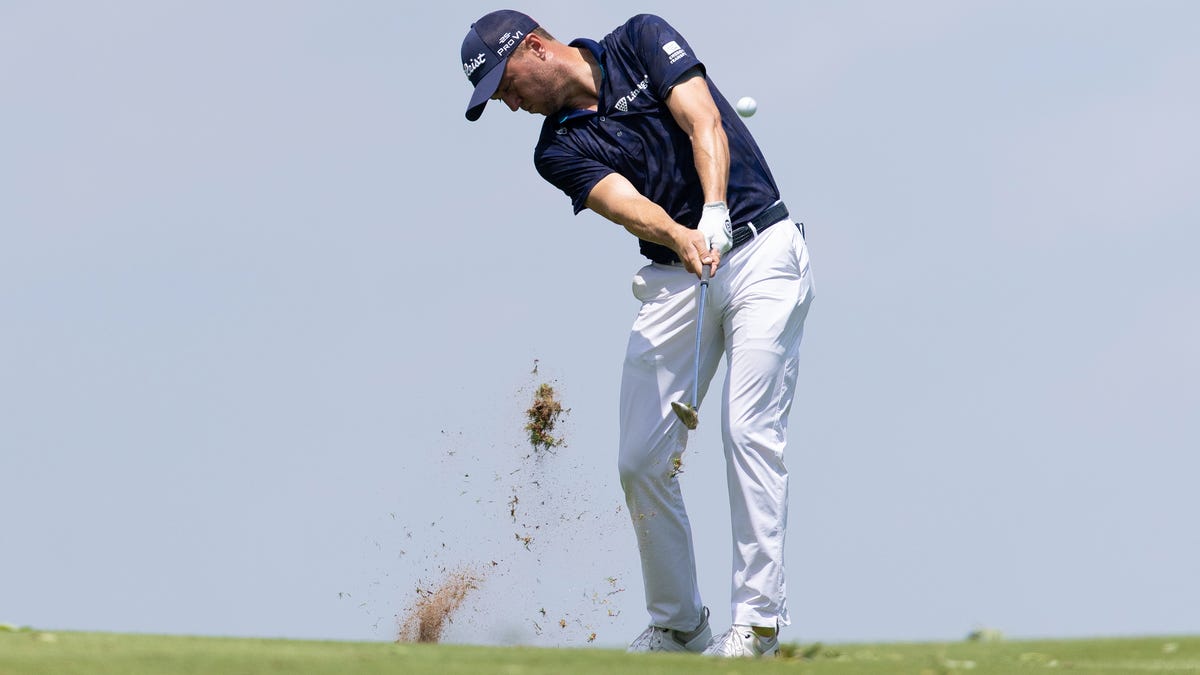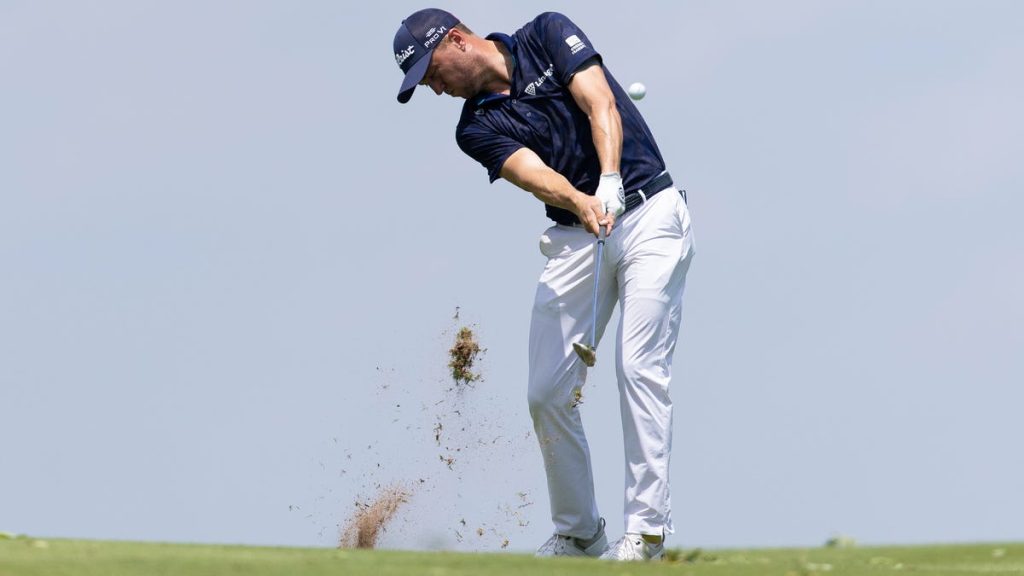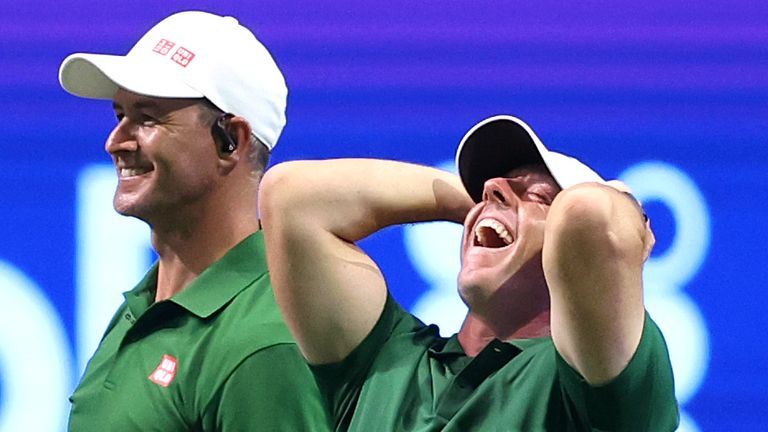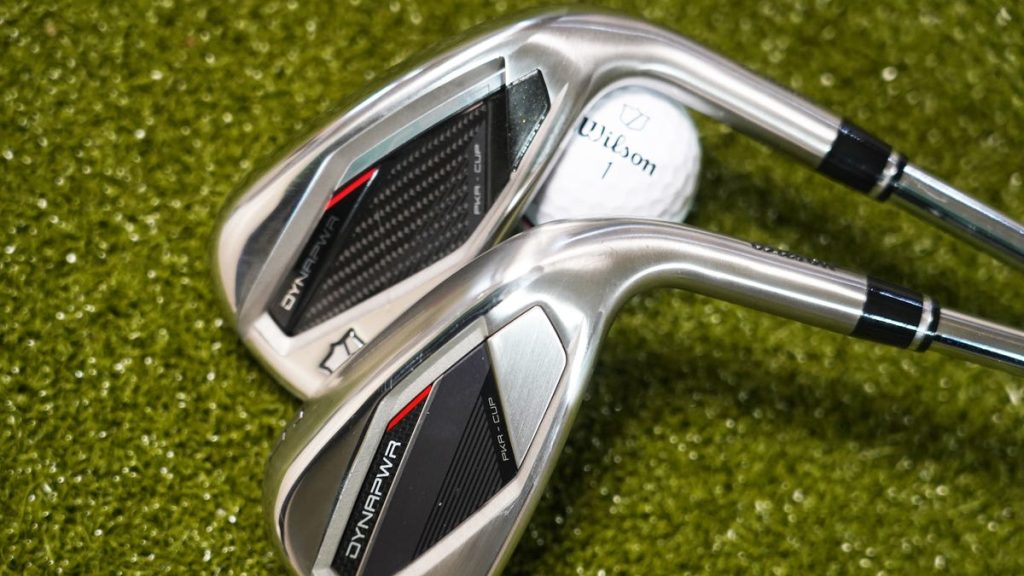
Baked out fairways and bunkers that lack sand present short game challenges. So do storm-soaked courses. Learn how to handle summer’s challenges.
It’s August, and across the United States, the fairways are baking, the greens are getting firm, and if you’ve noticed your short game has become a little unpredictable, you’re not alone. One big reason? The trusty wedges that performed well for you in the spring and early parts of the summer may be interacting with the ground and sand at your local course in a very different way as the heat bakes your course.
Wedge bounce sounds like one of those gear-geeky terms only equipment nerds toss around, but understanding what it is and how it works (even just a little) can save you strokes and spare you frustration on firm, dry turf. So, let’s break it down.
What is bounce, really?
The golf world owes you an apology because the term “bounce” is often used in reference to two different things.
Technically speaking, your wedge’s bounce is the curved back flange that extends off the back of the head. If you hold your wedge straight up, the bounce will be at the lowest point of the sole.
Confusingly, however, the term bounce is also often used instead of “bounce angle,” which is the angle created between the ground and a line extending upward from the lowest point on the sole to the leading edge.
A wedge with high bounce (typically 12 to 14 degrees) has a leading edge that rides higher and resists digging. A low bounce wedge (say 4 to 6 degrees) sits closer to the turf and usually has a thinner sole profile.
Why does this matter? Because bounce is usually a recreational golfer’s best friend, but depending on the lie and ground conditions you’re dealing with, it can also be your worst enemy.
Firm turf, tight lies: Low bounce
In late summer, especially if you’re playing on municipal courses that don’t get watered often, links-style courses, or you live in an especially hot and dry area, using a high-bounce wedge can be tricky. When the turf is soft, the high bounce design keeps the leading edge moving forward and through the turf, but if the ground is hard, the sole of a high-bounce wedge can ricochet off the turf and cause the leading edge to hit the ball instead of the face. The result is a bladed wedge shot that zips across the green, has almost no spin, and leaves you frustrated.
In situations like that (where the ground is hard or there is almost no sand in a baked-out bunker), low-bounce wedges shine. When you don’t have to worry about digging, a low-bounce wedge can help you nip the ball cleanly, pick it off the turf, and hit those crisp, spinning pitch shots we all love to see on highlight reels.
If you’re a sweeper (a player who tends to make shallow divots or no divot at all), you’re probably going to love a lower bounce wedge in these conditions.
Damp, soft, or fluffy: High bounce
Now flip the conditions. Maybe you’re teeing it up in the morning when the dew is heavy or you’re playing in a region that still gets a summer thunderstorm every afternoon (yes, Florida, I’m looking at you). If the turf is soft or the bunkers are fluffy, a low-bounce wedge can dig too much. That’s when a high bounce option should become your go-to.
Players with steeper swings, those who take larger divots or like to attack the ball from a more vertical angle, also tend to benefit from more bounce, especially when there’s moisture in the ground or more sand in the bunkers.
How many wedges should you carry, and what kind?
This depends on your skill level and how often you use your wedges for full swings versus finesse shots. Most accomplished players gravitate toward a four-wedge setup: pitching wedge, gap wedge, sand wedge, and lob wedge. That keeps your distances tight and gives you more shot-making options around the green.
But if you shoot in the 90s, struggle to break 100, or you’re someone who just wants to simplify things, a three-wedge setup may be smarter (pitching wedge, gap wedge, and sand wedge). Why? Many golfers at this level don’t get consistent results with lob wedges anyway, and a 54- or 56-degree sand wedge has plenty of loft to get you out of trouble.
Watch your loft gapping — it’s easier than you think to mess this up
Gapping issues sneak up on a lot of players. Modern irons, especially game-improvement sets, have strong lofts. A pitching wedge might be as low as 41 degrees, which means if you just grab a 52-degree gap wedge off the rack, you could end up with a massive 10-degree gap. That’s a recipe for distance inconsistencies.
The fix? Know the lofts of your irons, especially your 9-iron and pitching wedge, and build your wedge set accordingly. You want consistent gapping of about 4 to 6 degrees between clubs and yardage gaps of between 12 and 15 yards. Larger yardage gaps can result in being forced to play a lot of half- or three-quarter wedge shots, and no player with a handicap in the high-teens or 20s hits those shots consistently well.
What about sole grinds?
Pitching wedges and gap wedges are an extension of your iron set, so sole grinds tend to be straight and iron-like. In sand and lob wedges, however, different sole grinds can add versatility and allow you to open or close the face without dramatically affecting turf interaction.
For example, a grind that removes material from the heel can make it easier to lay the face open for high, soft shots while still keeping the leading edge low. That’s a handy club to have on a course that features tight lies and runoff areas (hello, Pinehurst).
On the other hand, if your wedge play is more straightforward and you typically play square-face chip shots and pitch shots, you may not have a need for an exotic sole grind.
The smartest thing to do may be to carry one lower-bounce wedge for firm fairways and tight lies (something around 6 degrees) and one higher-bounce option for sand and soft lies (something around 12 degrees). That gives you flexibility without complication.
The best way to know what sole grinds and bounce options might be best for you is to talk with a good custom fitter, explain where you play most often, and have them watch you hit some shots.
Rust: Looks cool, but don’t expect magic
Let’s bust a myth while we’re at it. A rusty wedge doesn’t spin more than a non-rusty wedge. The rust might cut glare and make your club look like it just played Royal Portrush, but when it comes to spin, it’s all about fresh, sharp grooves and clean clubfaces. Keep dirt out of the grooves and replace your wedges regularly, especially the ones you use most (like sand and lob wedges).
The bottom line
Summer golf isn’t just about hydration and hoping the cart fan works. It’s also about adapting. When the turf gets fast and firm, your wedge setup needs to work with the ground, not against it. Bounce matters a lot (maybe more than loft) and choosing the right wedge option can mean the difference between getting up-and-down to save par or watching another skulled pitch shots zip across the green and into a bunker.
If you are in the market for some new wedges, here are several options you might want to consider:
Callaway Opus SP
Price: $179.99
What you should know: Callaway’s Opus SP wedges blend Tour-inspired shaping with cutting-edge tech, including a new Spin Pocket design that removes material from behind the face to drop launch and boost spin. Available in five grinds, they offer plenty of bounce options for summer turf. Read the full review …
Cleveland RTZ
Price: $169.99
What you should know: For 2025, Cleveland developed a completely new metal alloy specifically for its newest wedges. The material provides an enhanced feel, helps the grooves stay sharp longer and does not rust, which means the RTZ wedges should deliver like-new levels of spin and performance for a longer time. The RTZ wedges are available in four sole grind configurations, each with a unique leading-edge design to suit various playing styles. Read the full review …
Cobra King Tour, King X
Price: $159
What you should know: Cobra’s King wedge lineup splits into two models: the Tour (classic shape, lots of bounce/grind options) and the King X (larger head, more forgiveness). Both feature CNC-milled faces and full-face grooves on higher lofts. The King X is especially good for mid- to high-handicappers who want help on off-center strikes, while the Tour model appeals to players who want short game precision. Great for firm summer conditions thanks to four sole grind options and several low-bounce setups. Read the full review …
Mizuno Pro T1, T3
Price: $180
What you should know: Mizuno’s updated Pro T-Series wedges (T1 and T3) were built for purists, but with a few modern touches. Forged in Hiroshima for that buttery Mizuno feel, they now feature improved sole shaping and new HydroFlow micro grooves to go along with the QuadCut+ main grooves for better spin control, even in damp or dewy conditions. Bounce options from 6 to 12 degrees are available. Read the full review …
Ping s159
Price: $197
What you should know: Ping expanded fitting options big-time with the s159, offering six sole grind variations, including two new tour-inspired designs. The MicroMax grooves vary based on loft, while a face-roughening treatment adds extra bite and the Hydropearl 2.0 finish helps maintain spin in wet or humid conditions. It’s a tech-heavy, high-performance wedge built to handle any summer lie you throw at it. Read the full review …
PXG Sugar Daddy 3
Price: $249.99
What you should know: PXG’s Sugar Daddy 3 wedges blend elite performance with premium materials, including milled faces and a forged head. The precision groove milling and dual sole options (BP-Grind and C-Grind) make them versatile enough for soft or firm summer turf. Read the full review …
TaylorMade MG5
Price: $199.99, $219.99 (TW Grind)
What you should know: The Milled Grind 5 (MG5) wedges are TaylorMade’s first fully forged MG wedge and they are the first to have saw-milled grooves for greater precision. The raw-steel faces also benefit from Spin Tread, a between-the-grooves pattern that creates face roughness and boosts consistency, especially in damp conditions. Six sole grinds are available, including two new Tour-inspired configurations and the TW (Tiger Woods) Grind.
Titleist Vokey Design SM10
Price: $189
What you should know: Bob Vokey’s SM10 wedges are a tour staple. The current version brings tighter tolerances, better CG placement for lower flight, and tons of spin. With six tour-proven grinds and loads of loft/bounce combos, there’s an SM10 for every swing and summer lie. Low-bounce options like the T Grind thrive on firm turf, while higher-bounce models like the K Grind are great in fluffy sand or wet grass. Read the full review …
Shop Titleist Vokey Design SM10
Tour Edge Exotics Wingman
What you should know: Tour Edge delivers value and performance with the Wingman wedges. Designed for forgiveness, these feature an extreme toe weight for stability and high-MOI performance around the green. A milled face and full-face grooves provide spin and consistency, especially for mid- to high-handicap golfers. Three sole grinds make this a solid option in firm summer conditions or hardpan lies. Read the full review …
Shop Tour Edge Exotics Wingman Wedge
Wilson Infinite
Price: $129.99
What you should know: Wilson’s Infinite wedges are designed to offer performance without the premium price. Cast from soft carbon steel, they provide a solid feel and good spin, and the milled face and high-toe design boost forgiveness on mishits. Bounce options are limited, but the wide-sole profile helps in soft or uneven conditions. While better players might want more grind options, these are great for recreational golfers who want better wedge performance without breaking the bank. Read the full review …
🏌️♂️⛳️🏌️♀️ 😍 USE the BET9JA Promotion Code YOHAIG for a ₦100,000 Bonus!




